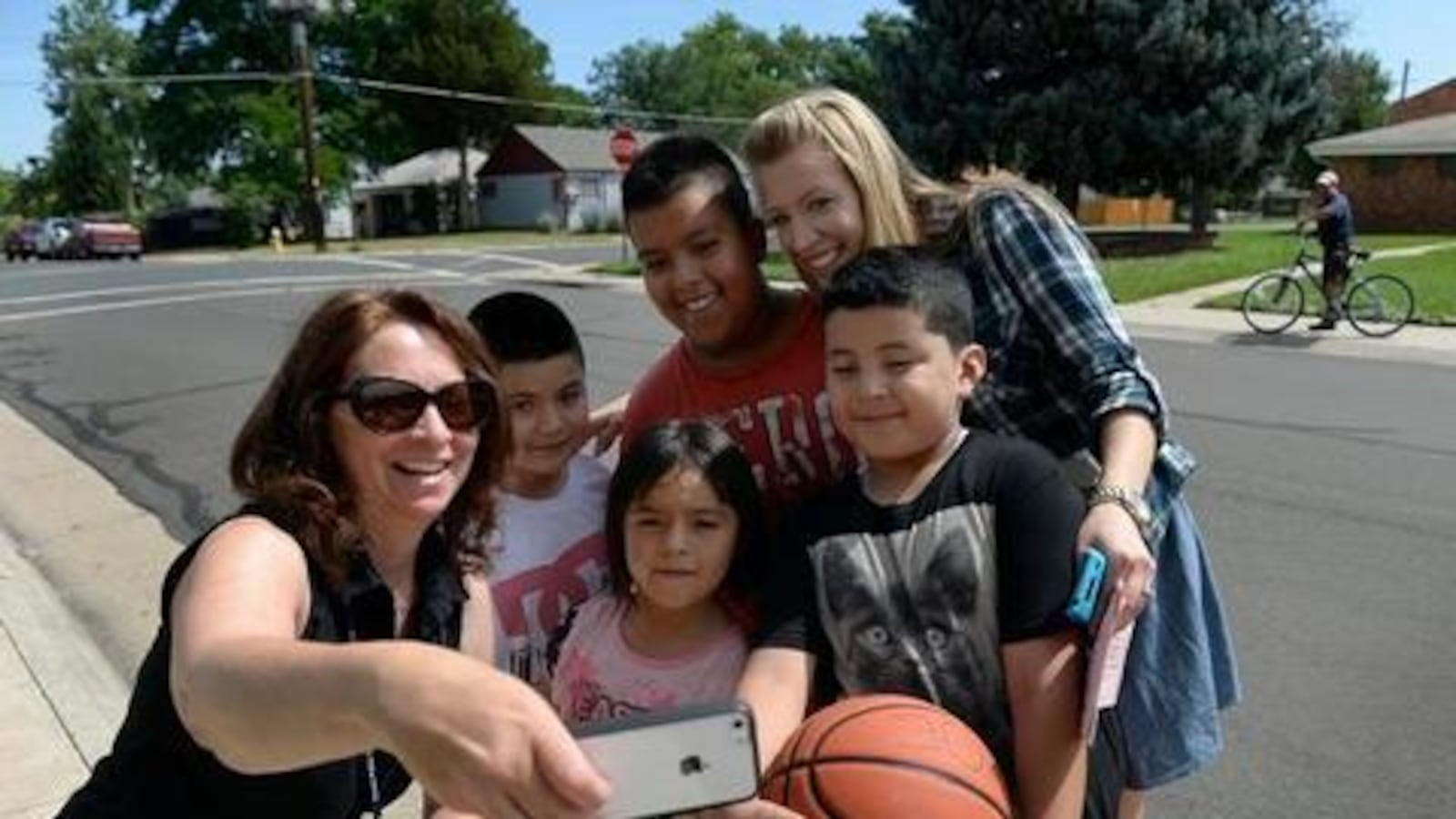Denver schools with low student suspension rates share several traits, according to a new report. Among them: The student population tends to be more integrated and the staff treat most misbehavior as a learning opportunity, not an infraction deserving punishment.
To produce the report, researchers from the University of Denver interviewed nearly 200 educators from 33 Denver schools that had suspension rates between 0 and 3 percent in the 2014-15 school year — including for black students.
Data shows that many Colorado school districts, including Denver Public Schools, suspend and expel African-American students at a higher rate than they do white students.
The researchers wanted to know more about the characteristics of those 33 schools.
Here are highlights from their findings:
Younger students, more integrated. Of the 33 schools, 58 percent were elementary schools and 58 percent were traditional district-run schools (meaning they aren’t charter or innovation schools).
The schools also had fewer children of color and fewer low-income children than other DPS schools, making them more racially and economically integrated.
An average of 61 percent of students at those 33 schools were children of color, as compared to the district average of 78 percent. An average of 56 percent were eligible for federally subsidized lunches, an indicator of poverty, as opposed to the district average of 74 percent.
The schools also had fewer English language learners and students with disabilities.
Relationships matter. Many educators interviewed attributed their school’s low suspension rates to strong relationships between teachers and students. Teachers who know their students’ strengths, challenges and triggers are more likely to understand the underlying reasons for misbehavior and be in a better position to respond, they said.
Conducting home visits to meet students’ families or attending students’ after-school sporting events and recitals were cited by the educators as ways to build those relationships.
Students are more willing to take responsibility for their actions and be more open to changing their behavior when they feel known by the adults in the building, the educators said.
“If you’ve got a relationship with a student, they’re 100 times more likely to listen to you and understand and respond and try,” one educator told the researchers.
Solutions, not consequences. Many of the schools use restorative practices to address misbehavior. Students who break the rules are asked to reflect on what happened, identify the harm done and come up with a plan to repair any damage, the educators said.
While that approach takes more time than meting out a suspension, the educators said it allows students to develop conflict resolution skills and an understanding of accountability.
Keep students in the classroom. A majority of the schools abide by the philosophy that classroom teachers should be the first to respond to misbehavior and conflict — and that students should be sent home from school only as a last resort.
“You can’t just send them home because you needed to take a break,” an elementary school principal told the researchers. “When they come back, they’re going to do the same thing.”
Be aware of racial inequity and bias. While the researchers noted that many educators were uncomfortable talking about the role of race in their discipline process, educators at about a third of the 33 schools explicitly discussed their use of culturally responsive practices.
They recognize that students of color have often been marginalized and that extra efforts should be made to connect with them and their families. By understanding the impact of racism and bias, the researchers wrote that educators at those schools “took responsibility for changing student academic and discipline outcomes, rather than blaming students and families.”
Student support services are crucial. Many educators credited their school’s social workers, counselors, psychologists, interventionists and restorative practices specialists with helping put in place positive responses to student misbehavior that helps kids instead of punishing them.
For more, read the full report below.

